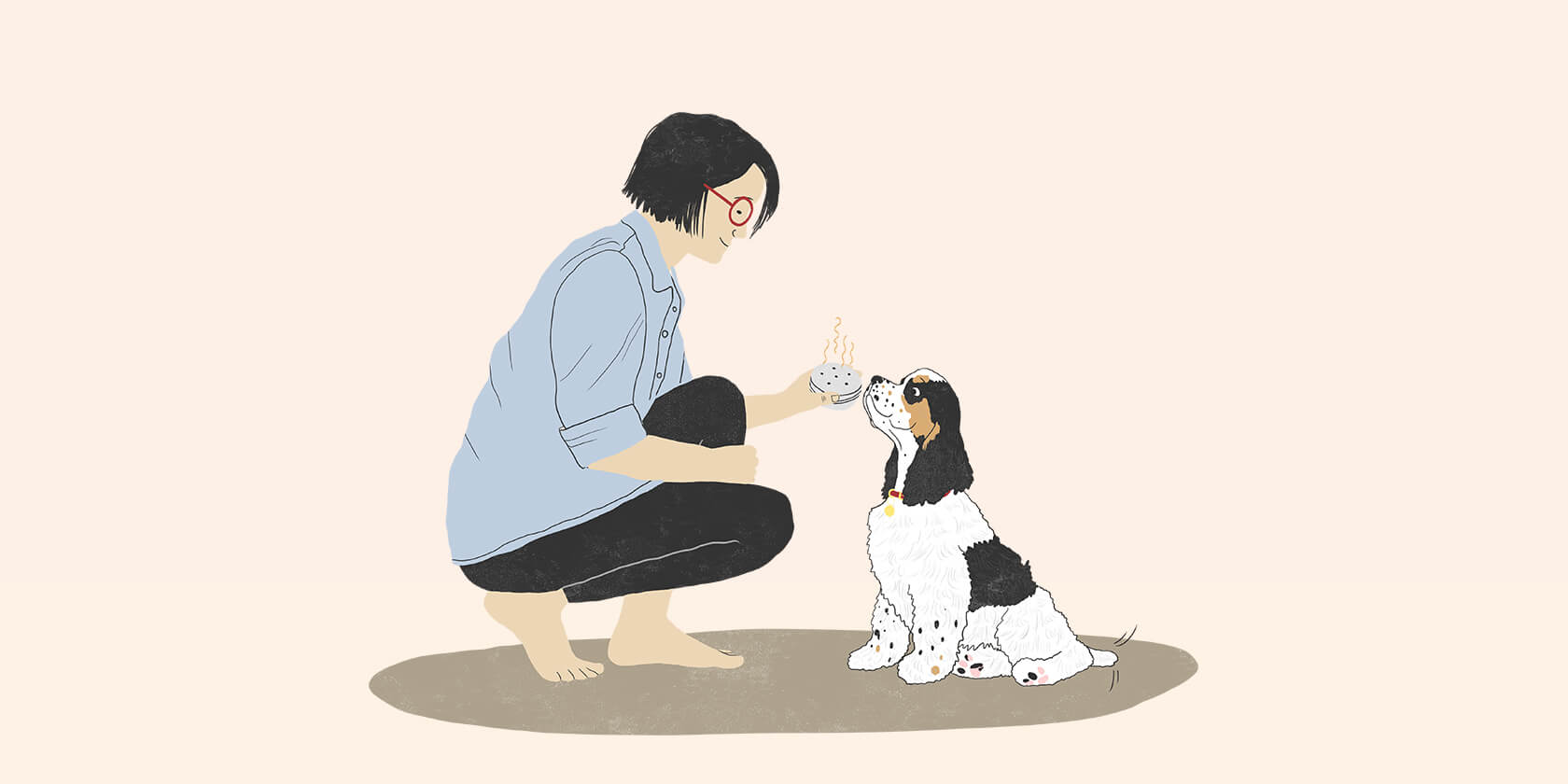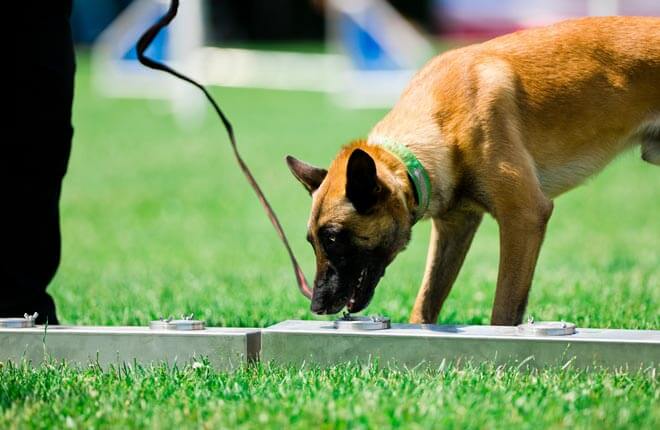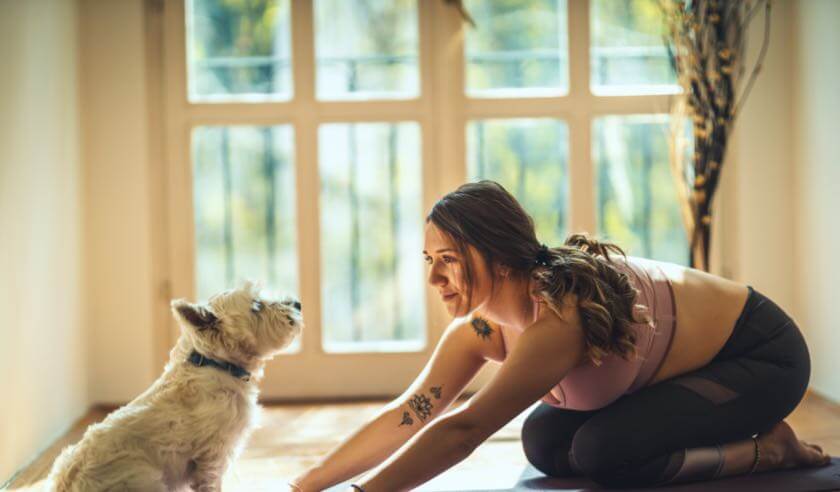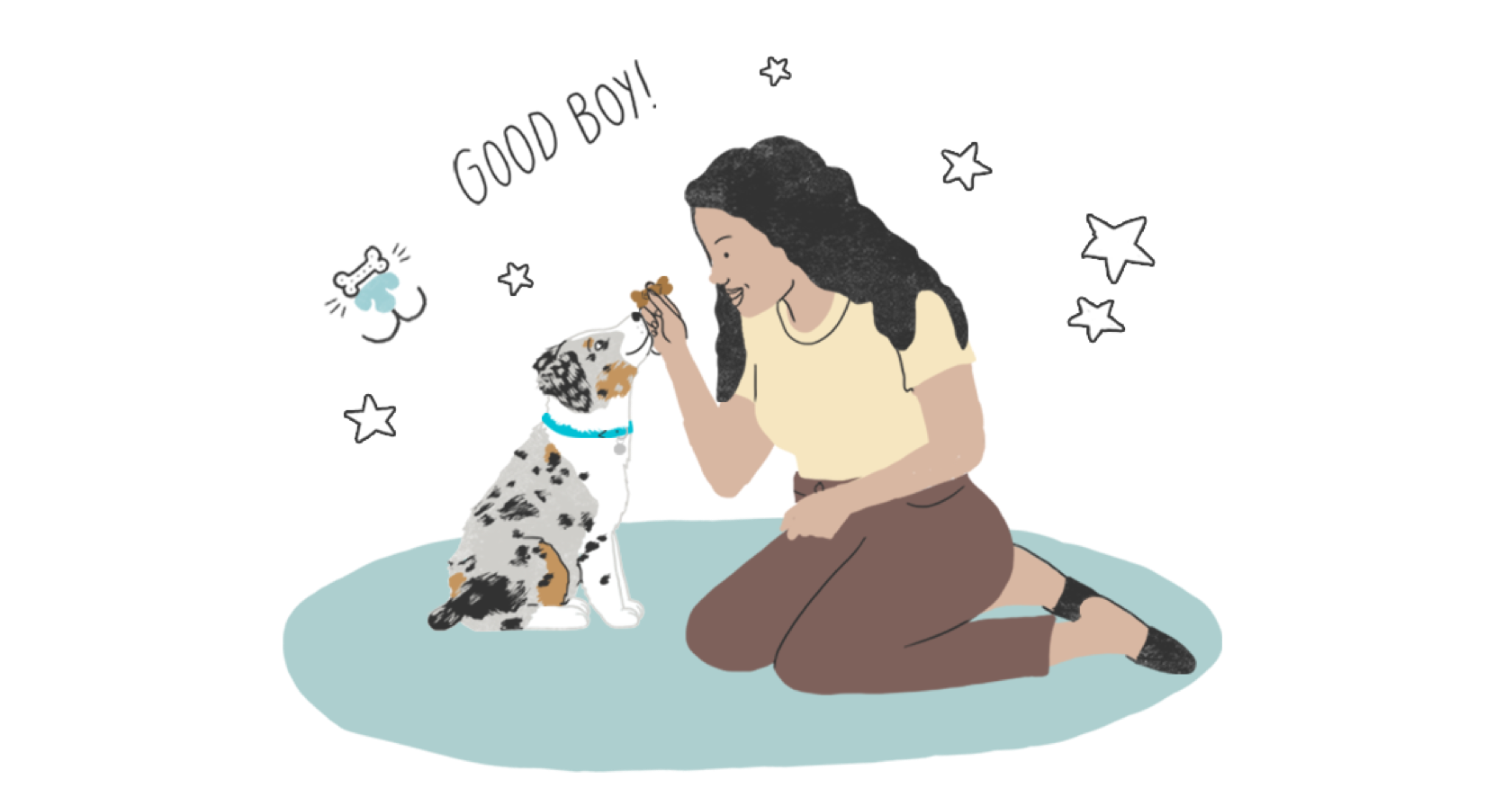Dogs love to sniff, and their noses are a powerful tool. Dogs “see” the world through smell, with over 220 million scent receptors in their noses[1] — that’s almost fifty times what we humans have! It’s no wonder dogs can work as scent detectors, helping to track down missing people, truffles, explosives, drugs, and even chemical changes that indicate low blood sugar, cancer, or other illnesses in humans. It’s amazing what a dog’s nose can do.
Sniffing is a natural and often calming behavior for dogs. Dogs get mental stimulation from scanning different smells and processing all that information. Getting plenty of sniffing time provides incredible enrichment for your dog’s life. Your dog’s brain is devoted to analyzing smells, so imagine how much mental exercise they get when learning how to track down a specific scent on cue.

Scent training is a wonderful way to build your relationship with your dog and improve your dog’s mental health. It’s a perfect way to introduce a new skill, have fun together, exercise your pup, and stimulate their brain. And you don’t even need to leave your house to get started with this exciting activity.
Dog Scent Training Supplies
You’ll need a couple of things to introduce scent training to your dog. You might already have a few of these at home, but all can be easily found online as well.
- Scent source. Fragrant oils can be a useful tool for scent training. Birch is one of the most common scents to use, along with anise and clove. If you already have a particular type of scent work in mind for your dog, such as truffle hunting, you can start with truffle oil. Keep in mind that many essential oils can be irritating and harmful to dogs, so it is important to make sure that whatever oil you choose is safe for your dog and that you use only it in very small quantities specifically for scent training.
- Cotton swabs. These are used to carry the fragrant oil.
- Disposable gloves. It’s important not to mix your scent with the training scent.
- Plastic sealable bags. This keeps any unused supplies clear of the scent you’re training with.
- A scent tin. This should be a small tin or jar with a lid that can hold the cotton swabs. The lid should have some small holes drilled in the top. A well-cleaned and dried spice jar or saltshaker can do the trick.
- A scent box. This should be a plastic container with holes drilled in the lid. You’ll use it when you start teaching your dog to find the scent.
- A reward. Your dog’s favorite high-value treats.
How to Scent Train Your Dog
Create a scent item. It’s important to only apply the scent to one item and not accidentally contaminate your hands, clothing, or other objects with the same smell — that can be very confusing for your dog. That’s why you’ll need gloves and plastic bags.
You’ll want to do this in a room far away from your dog, such as out in the garage or in a bathroom with the door closed. Put on your gloves and put two drops of the oil on a cotton swab and then place the swab in your scent tin and screw on the lid. Dispose of your gloves in a plastic bag, sealing it before tossing in the trash.
Introducing the scent to your dog. Hold your scent tin out for your dog to investigate. If they sniff it, immediately give them a treat. Make sure to give your dog the treat right at the source of the smell. Any time they put their nose on the scent tin, reward with a treat. If they keep their nose stuck to the tin, keep feeding them treats.
Do this for a few minutes, switching up which hand is holding the scent tin. Don’t overdo it in each training session. You want your dog to stay engaged and build the association that the scent comes with a yummy reward. If you work too long, they might lose interest, or their nose can get overwhelmed with the new scent.
Teaching your dog to find the scent. Once your dog is orienting to the scent tin reliably, it’s time to up the ante. At this point, you’ll also want to introduce a verbal cue to tell your dog to find the scent. Simply say the word you choose, such as “search,” “find,” or “seek” as you begin.
Place the scent tin inside of the plastic scent box. Present the box to your dog and practice rewarding them for sniffing out the scent, feeding them their treat at the box. Start to place the box on the ground beside your feet and then on either side of you.
Make this game incrementally more difficult with each session. You can “hide” the scent box with your dog watching. Always have a big party when they sniff out the scent box!
As your dog gets better at tracking the scent, you can increase the difficulty level. Start to hide multiple scent boxes, with only one containing the scent tin. Or have a friend or family member hide the scent, so you can’t unwittingly give your dog any hints with your body language while they sniff it out.
Scent Training Games for Dogs
You don’t have to introduce a brand-new scent to your dog to still have fun with nose work. Instead, you can encourage them to use their nose to sniff out their favorite treats or favorite people. Here are a couple of fun nose work games to try at home.
- Hide-and-seek. You can play hide-and-seek with your dog’s food-stuffed puzzle toys or with people. Start easy. Allow your dog to see you hide their treat or watch as you hide around the corner or behind a door. When they find you, reward them with praise, petting, and getting to enjoy their treat. Make the hiding place a little harder each time, only helping them out by making a noise or directing them towards the toy when they might otherwise give up. This is a great game for the whole family and puts your dog’s brain to work.
- The muffin tin game. Grab a muffin tin and twelve tennis balls to make a DIY food puzzle. Sprinkle a couple of training treats in two or three muffin tin holes. Cover these and the empty muffin tin holes with tennis balls. Put the puzzle down for your dog to figure out — you’ll notice they start to use their nose to determine which tennis balls to pull out first to get to the tasty treats.
ZPC-01254R1
- Uemura EE. Fundamentals of Canine Neuroanatomy and Neurophysiology. 1st ed Danvers, MA: Blackwell; 2015.





